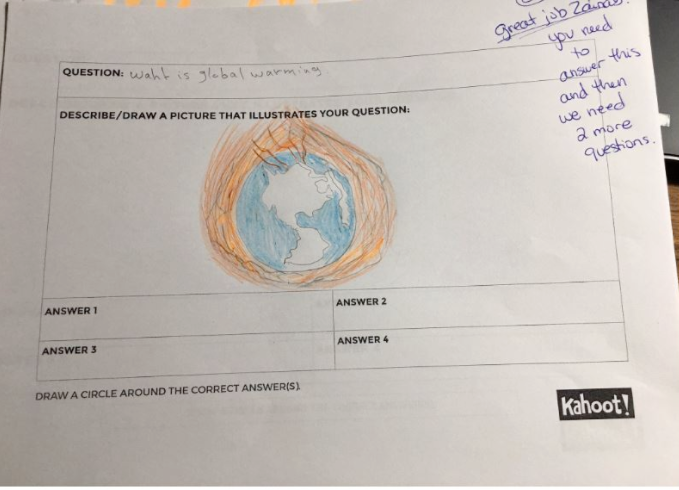Going Beyond the Quiz with Kahoot!
Students walk into class asking for Kahoot! If that is the level of interest, don’t we owe it to them, and to ourselves, to figure out the best ways to use this platform that is free for educators? For me, as a teacher of recent immigrants, this is using the platform for language production.
Many teachers are using Kahoot! to review the material they have taught. This makes sense as it is super easy to make or copy a kahoot – there are literally millions of kahoot games out there for us to use or tweak for our content area. I support that as long as students have plenty of opportunities to answer open-ended questions and other ways to elevate their thinking skills. I absolutely use Kahoot! for quizzes but over the past year, I have learned to capitalize on deeper uses of the platform.
Language Learners Creating their own Kahoots
Before I get into how powerful Kahoot! can be for language development, let’s think about how creating kahoots can propel the learning of every child in your classroom.
Kahoot! offers a printable planning template that is to be used as a planning tool. This paper template has room for a question, an illustration and 2-4 possible answers. If you think your students enjoy playing a kahoot, you should see their engagement when they are playing a kahoot that theymade as a class.
Reviewing content is a great idea but having your students create the review assessment is a much higher cognitive task for them. We have suddenly shifted the learning task from understanding to creating. There is a big academic payoff when students must determine appropriate visual representations and wrong answer choices for questions about your content.
For my students, learning English is our main priority. By that I mean producing English, comprehending English and using the language in authentic ways. I teach Newcomer English Language Development (NELD) and my students are all recent immigrants to our country.
Creating a Kahoot in English
Guess what? My non-English speakers can create a kahoot in English. If you allow them to use some native language, the student can create the question and answers and also provide an illustration on the template. Students look online for appropriate visuals to use in the online version of the game. With a free resource like Google Translate, we can easily get their writing into English.
Here’s an example of a student who had been in the country only a few days. She wanted to show that she understood global warming. She got this far quickly but then needed to spend more time expressing the correct answer and also coming up with wrong answers: that’s where more critical thinking comes into play. However, I’m pleased that she can access the content and participate from Day 1 in our class:

When we play the kahoot with my students, I read the question and the correct answer aloud to model pronunciation. Then the class reads it in unison before we move on to the next question. This language practice is an excellent way to have everyone practicing basic and academic language with very low stress, which is key to language acquisition.
When I make the game, I correct any English errors and either the student or I find appropriate visuals based on their illustration to support comprehension for the others. I generally ask each student to come up with one question so we can create a few games with a reasonable amount of questions.
I’m the ESL teacher but I like to use grade-level science or social studies for kahoot games to support content teachers. When we create a kahoot with content, and have students producing the target language while playing the game, I have supported grade level content learning and also met important language learning objectives for my students!
Stay Tuned for More!
Thanks to Carol for Part 1 of this important series on learning languages with Kahoot! Stay tuned for the next part in the series coming soon! Follow Carol @MsSalvac.
Are you a classroom superhero like Carol? Do you want to write on the Kahoot blog? Send us an email!




